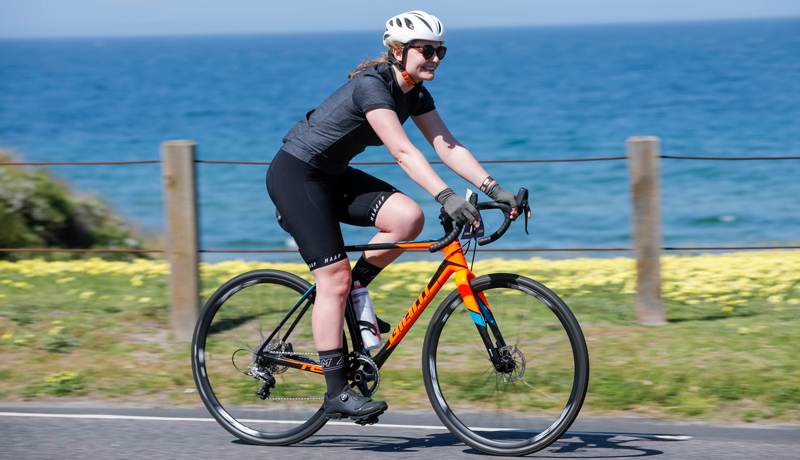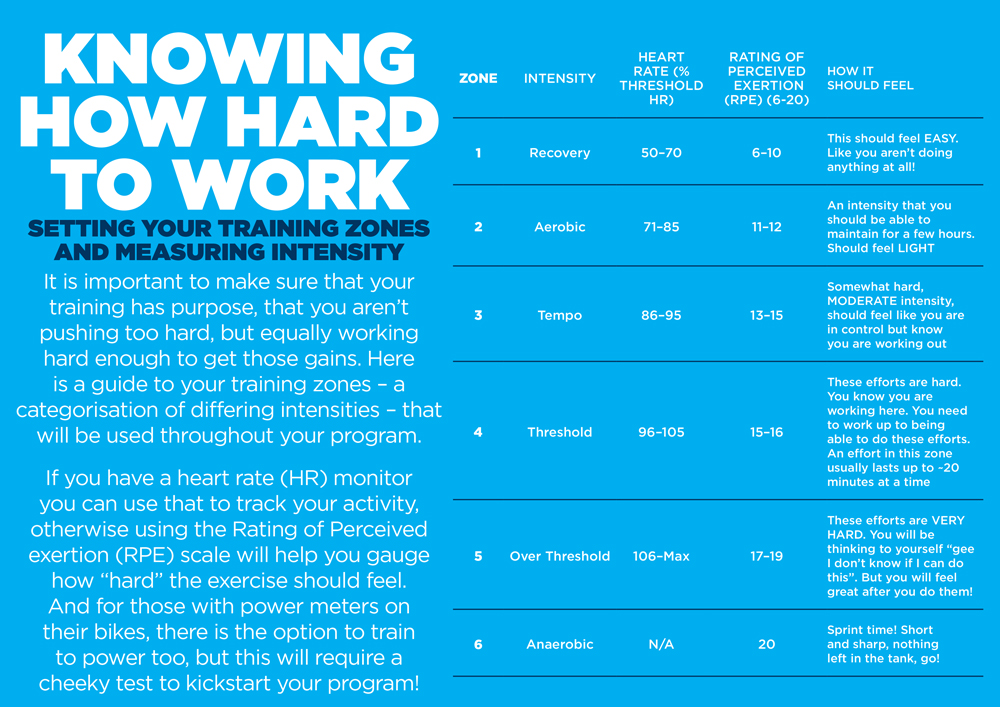UNITED ENERGY AROUND THE BAY
Words by training coach, Kate Perry
If you find yourself here, it could be because you have started your training plan and are thinking “why are these sessions so easy?”. Or maybe you just want to know what all the fuss is about when it comes to data, numbers and training stress scores.
This quick intro will hopefully give you a greater appreciation for training zones and why you can’t just jump into a bunch of Zwift races with little preparation and not blow up!
What are training zones?
Before we look at the different training zones, it is important to understand what an adaptation is, as these little gems are the reason we divide our training up and work to different zones. Without the adaptations we won’t see results!
The word adaptation originated from a French word meaning a “modification of a thing to suit new conditions”. The adaptations to exercise training are defined by the changes in structure and function which occur after repeated exposures to bouts of exercise, or training sessions. Considering that exercise is a physiological stress, adaptations prepare the body to cope better with the bout of exercise and may be associated with delaying the onset of fatigue, a greater efficiency when completing exercise, or increasing things like muscular strength and power. Working in different training zones will help with these adaptations.

Now there are several great resources out there that can go into a lot more detail for you if you’re interested in exactly which adaptations occur and when because of endurance training. A great place to get started is to have a read of Dr Andy Coggan’s introduction to training zones. For those who use Training Peaks, you have probably heard of him before…
In short, training zones and periodisation is important for a few reasons:
- Decrease the risk of injury due to overtraining
- Make sure you have the right physiological adaptations before you up the intensity (your body can handle the training load)
- Prevent you from getting ill (our immune system function is compromised with high training loads)
- Help you prepare for the specific demands of the event (don’t peak too early and make sure you have included training sessions which are the same distance/intensity as event day)

How do you know what your threshold is? “I hate testing!”
I am not sure what it is exactly about completing a threshold ‘test’, but for some reason, whenever the word test is mentioned we seem to get into our own heads before we can put the power down on the pedals and we talk ourselves out of it. I often encourage my athletes to think of it as a yardstick rather than something that defines them. We simply need to know what their threshold is, to correctly calculate training zones. It doesn’t matter so much what the number is, but it needs to be relevant at the time.
There is no problem with your threshold changing throughout the season; and frankly you want your threshold to change throughout the season. Just like in the footy season, players can’t be peaking in fitness during pre-season, comp season and off-season; so, there is no reason why endurance athletes need to be “on” all the time.
If you are someone who tends to shy away from the traditional 20-minute power test, it’s worth reading this blog about why thresholds tests are worth the stress.
Outdoor or indoor?
If you hate indoor trainers and think you might be better suited to the road, completing this effort on a climb like Kinglake or the 1:20 is a great idea. For those that want to venture a little further, my personal favourite is the Donna Buang Rd climb (top or bottom half are great for a 20-minute effort – and if you’re game enough, why not do a TT from the bottom all the way to the summit!)
Otherwise, here is another blog which talks through other threshold test options if the 20 minute duration still scares you!

I have tested myself, calculated my zones, now what?
It is time to start training! Now before you dive in and think “some of these sessions feel a bit easy, let’s get going!”, take a think back to what we said earlier about providing the right stimulus for the right training adaptation and the right time in the program.
Here is a quick overview for you to keep in mind when out on the bike:
Zones 1–2 (Recovery and Endurance)
This is where we begin to see an increase in the mitochondrial enzymes, an increase in muscle glycogen storage as well as other adaptations which relate to the transport of oxygen to working muscles
Zones 3–4 (Tempo and Lactate Threshold)
These are the honey holes of training zones with reference to adaptations that help with long sustained efforts. It is time spent in these zones that will see a greater increase in mitochondrial enzymes, an increase in lactate threshold, further increase in muscle glycogen storage as well as an increase in stroke volume and the start of an increase in VO2 max.
Without spending time in Zones 1–2, we haven’t laid the foundations for these adaptations, so we need to be patient…
Zones 5+ (VO2 max, Anaerobic Power and Neuromuscular Power)
There aren’t too many of these sessions in the United Energy Around the Bay programs due to the specificity of training for the event (you realistically won’t be pushing into these zones on the day so there is no real need to train them up…) but, these zones are where we see increases in muscular power, and an increase in anaerobic capacity.
Think short sharp sprints, powering over short climbs and accelerations in the bunch, that is Zones 5 and above!
Next steps…
So hopefully that gives you some more context about the different zones and why they are all of equal importance. If you don’t have a power meter that is fine. Wearing a heart rate (HR) monitor throughout your training program as well as writing down the RPE (how hard the session felt) will still give you some context of the fitness gains you are seeing over the 16-week duration.
Sessions should feel easier as you get further into the program, your average HR should drop and you should feel like you can push harder for longer once you have built up the base.
Best of luck with your training!
KP
Sign up to United Energy Around the Bay by 2 June to save and score a free jersey!
Enter nowBecome our friend
Find out more about Bicycle Network and support us in making it easier for people to ride bikes.

